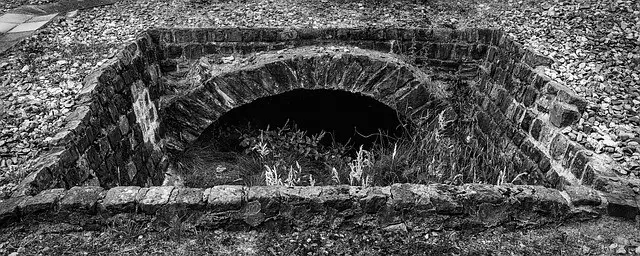How Deep is a Septic Tank?
Septic tanks are constructed below the surface. The depth of the tank depends on various factors, which are taken into consideration during the installation of the tank. Knowing the depth of a septic tank is necessary, especially when access is need for pumping or inspection. In this article, we will discuss the usual depth of a septic tank, what happens if the tank is located unnecessarily deep below the surface & a lot more.
So, how deep is a septic tank? Generally, septic tank components along with its lid are deeply buried between 4 inches and 4 feet underground. These tanks are usually rectangular in shape and measure 5 feet by 8 feet.
Continue reading to know more facts related to the depth of septic tanks, like if we need to have the septic tank below the frost line to reduce the chances of freezing and what happens if the septic tank is deeply buried.
CALL 855.925.0760 FOR SEPTIC SERVICES
Optimum Depth of a Septic Tank

Each situation and location are different; hence the depth of a septic tank varies according to the circumstances. Thus, the designer considers different factors before deciding on the structure.
Suppose, the soil type is such that it allows using the gravity system. In such a situation, the septic tank can be constructed close to the surface. Now, this implies that the lid can move up to grade level. It also means that the pipes from the home can be trenched approximately 1.5 to 2 feet.
Thus, it allows all effluent to move from the septic tank towards the distribution section. This is where these get dispersed. The trenches are quite shallow and are generally around 2 feet deep. These can be shallower depending on climatic conditions. At times they are a lot deeper as well.
The tank level also determines the depth of the drain field. Thus, ideally, the top of this septic tank needs to be right below grade and with extra soil cover. In areas where the climate is quite cold, septic tanks are constructed much deeper.
CALL 855.925.0760 FOR SEPTIC SERVICES
What Are the Factors That Determine the Depth of a Septic Tank?
The depth of a septic tank depends on factors like the kind of soil and geology. Another factor is related to the depth of sewage line from the property. In cold climates as well, the latent heat from ground along with bacterial action from the sewage prevents it from freezing. Any septic tank should not be buried excessively underground, as it can damage it and will hamper its proper functioning.
Here are some such factors explained in detail:
- Water Table – If there is a high water table then a deep septic tank is not the ideal choice. There might be a need to add additional soil for better absorption. It creates a mound, which can work like an above-ground drainfield.
- Type of Soil – The soil content also plays a role in the depth of septic tank. In regions with high clay content, high water tables are quite common. Professionals can determine the nature of soil and suggest depth of the septic tank accordingly.
- Features of the Property – As you plan your system, your contractor can analyze the features of your property. Such an analysis includes drainage patterns, water bodies in the area and slope. From such factors, they can determine the ideal depth of the septic tank.
- Kind of Tank – The type of tank also plays a role. There are many septic tanks that are built to hold as much as 2 to 3 feet of soil on top. Thus, if the tanks are placed lot deeper, it will be a violation of the manufacturers warranty.
CALL 855.925.0760 FOR SEPTIC SERVICES
Why Deep Septic Tanks Should Have a Riser Installed?
Septic tanks that are installed deep should have a riser installed. Risers are of large diameter, often referred to as ‘wells’. These are placed right over the septic tank inlet baffle access port. This is usually the outlet.
The main purpose of installing it is to ensure easy access to the pump when professionals come in. Professionals need access for services like baffle repair, inspection, septic tank pumping, cleaning and more.
In case the septic is buried a few inches below the ground, it is a good practice to install a septic riser. This is a large diameter pipe which provides easy access to the tank for pumping and inspection.
How to Find the Septic Tank Lid Deep Below the Surface?
If you are trying to find how deep your septic tank is, you can follow the next few steps which will help in finding the septic tank lid:
- You need to search where pipes are leaving your house. This will be in the basement region. So, just follow where these pipes are going.
- Just walk 10 steps from your house. Septic tanks are generally placed approximately 10-20 feet from your door.
- You can take a steel probe with you. This should ideally be of 5 feet. Use it to push into the ground. You will get to feel the location of the septic tank.
- You have to be careful, not to damage the lid. If you are not careful, you can puncture it. If you puncture it, you will have to spend a lot of money to replace it.
- You will find the first cap usually in a grassy area. This is normally towards the edge of the tank.
- The general width of the tank is six feet.
- You can again get back to your house door. Now walk just 6 feet and you should be able to locate the other cap.
- Walk two steps and you get the discharge cap.
Questions Related to How Deep is a Septic Tank
- How Deep is My Septic Tank Lid?
The septic tank lids are usually found at the ground level. Generally, the lids are buried anywhere between 4 inches to 4 feet underground.
- What Happens If the Septic Tank is Installed Excessively Deep?
It is recommended not to install septic tank excessively deep. In case if it is installed too deep, it might malfunction quite frequently. Effluent might backup quite often and not naturally flow in the drainfield.
- Can I drive over the septic tank which is deeply buried?
No, you should never drive over the septic tank, even if you know it is deeply buried. Driving over the tank will damage its surface, crack it and cause it malfunctioning within a short time.
- Who Can Tell Me About The Depth Of My Septic Tank?
You can check your property papers which should have details about the septic tank construction. If you have moved into the area recently, you can ask the homeowner. If nothing works out, you can seek help from the professionals who come for inspection or pumping.
- How Do I Know About Problems in The Septic Tank which is Buried Deep?
To detect problems early, it is recommended to get the septic tank inspected at regular intervals. Besides, if you get signs like foul odor or sewer backing up, it is time to check the septic tank.
If you are not aware of the depth of the septic tank, you can seek help from septic tank experts. They can help you in locating the lid of the tank much faster, no matter how deep the lid is. Generally, the depth of the septic lid is 5 feet but it depends on the depth of the tank.
CALL 855.925.0760 FOR SEPTIC SERVICES
OR
Request A Quote
Sources:
https://www.paradisevalleyseptic.com/how-deep-should-a-septic-system-be/
https://inspectapedia.com/septic/Septic_Tank_Design_Depth.php
https://septictankcare.net/deep-surface-septic-lid/
https://www.hunker.com/12553680/how-deep-should-a-septic-leach-field-be








